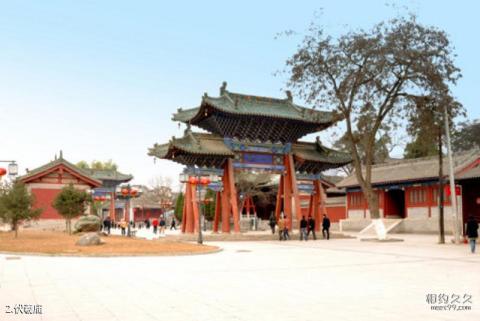
Introduction to Fuxi Temple: Fuxi Temple’s original name is Taihao Palace, commonly known as Renzong Temple. The temple was first built in the 19th to 20th years of Chenghua in the Ming Dynasty (1483-1484). It has been renovated nine times to form a large-scale building complex. . After the ninth reconstruction in the 11th to 13th years of Guangxu reign of the Qing Dynasty (1885-1887), it covered an area of 13,000 square meters, and the existing area is more than 6,600 square meters.
Fuxi Temple is built facing the street, with many courtyards connected to each other. It is vast and deep. There are 10 ancient buildings in the temple including the theater building, archway, gate, Yimen, Xiantian Hall, Taiji Hall, Bell Tower, Drum Tower, and Laihe Hall; there are 6 new buildings including the court room, stele gallery, and exhibition hall. There are 76 rooms in total. The entire building complex faces north and south. The archway, gate, Yimen, Xiantian Hall, and Taiji Hall are arranged in sequence along the vertical axis, advancing layer by layer, solemn and majestic. The court rooms and stele corridors are symmetrically distributed along the horizontal axis, regular and uniform, with a distinctive style. Chinese traditional architectural art style.
Since Fuxi is the first generation emperor in ancient history and legend, the building complex is in the palace-style architectural mode. It is the largest Fuxi sacrificial building complex in the country. Because of the Fuxi Temple, Xiaoxiguan City was also called Fuxi City before the Republic of China. .
The courtyards of Fuxi Temple are dotted with ancient cypresses, which were planted in the Ming Dynasty. There were originally 64 cypresses, symbolizing the number of Fuxi's sixty-four hexagrams, and 37 of them are now in existence. Tall and green, with thick shade blocking out the sun. There were originally two ancient Sophora japonica trees in the east and west corners inside the gate of Fuxi Temple, standing opposite each other. There is now one tree on the east side with a hollow trunk. It has been identified as being planted in the Tang Dynasty.
